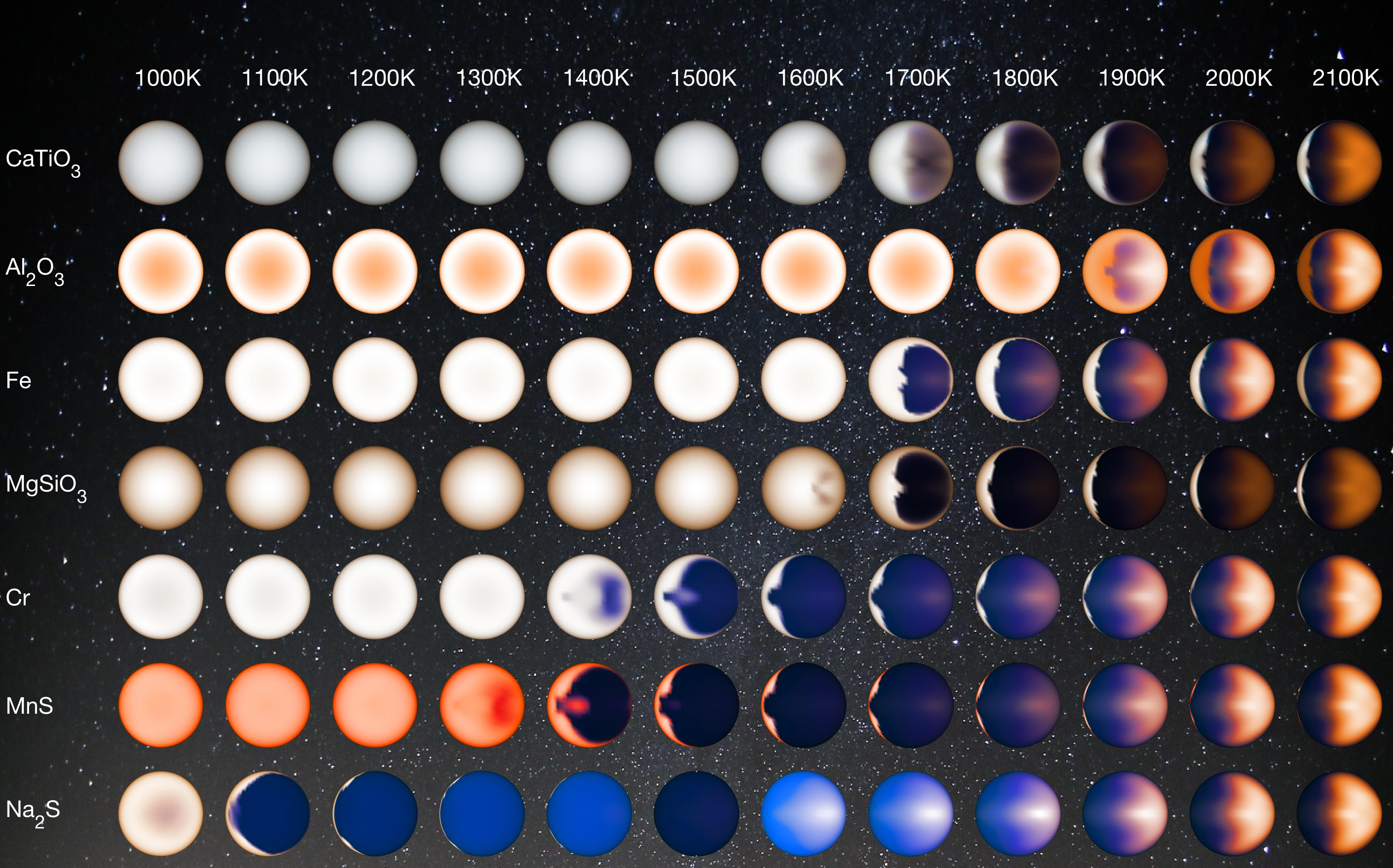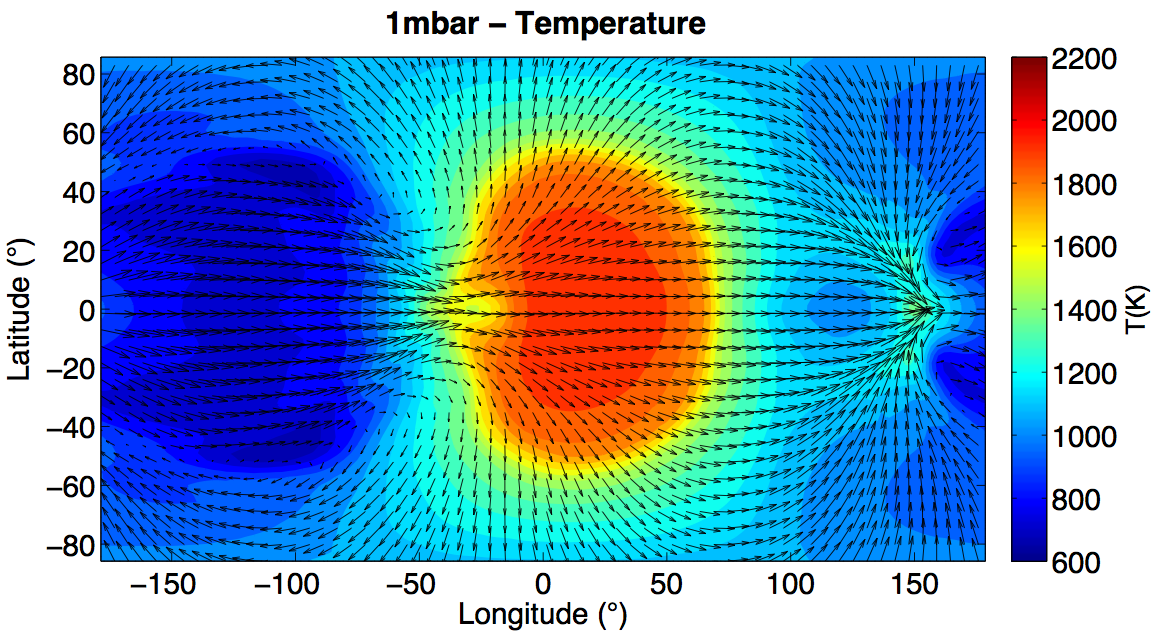The colorful clouds of hot-Jupiters

Cloud formation in hot tidally locked planets is very different from cloud formation on Earth and solar-system bodies. Whereas vertical temperature gradients and vertical motions drive the cloud formation on Earth, horizontal temperature gradients and horizontal winds are dominant in hot Jupiters atmospheres.
Observations from the Kepler spacecraft suggest that most hot Jupiters posses clouds west of the substellar point and a clear sky east of it. Global circulation models can reproduce this behavior. As shown in the figure , for a given cloud composition (line in the figure) the models predict that cool planets (on the left) should be totally covered by clouds whereas very hot planets (on the right) should be cloudless. In between, there is a sweet spot in temperature where the dayside of the planet is partially cloudy, as was observed by the Kepler spacecraft.
In order to reproduce the Kepler observations showing that most planets should have partially cloudy atmospheres, our models suggest that the cloud composition should change as a function of the planet temperature. Whereas the hottest known planets should be dominated by titanium oxide clouds, cooler planets should posses silicate clouds and manganese sulfide clouds should dominate in the coolest known.
3D mixing in hot-Jupiter atmospheres
 Hot-jupiters are gas giants orbiting very close to their host star. Most of them are believed to be tidally locked, creating a huge assymetry between a highly irradiated day-side and a non-irradiated night side. This energy power strong, km/s winds, that transport part of the energy from the dayside to the nightside of the planet.
We study how these strong winds can efficiently mix the radiative atmosphere of these planets. Including tracers into 3D-GCM models of hot-Jupiters, we show that the mixing done by planetary scale advective motion is very efficient and should therefore be dominant over small-scale turbulent mixing.
Hot-jupiters are gas giants orbiting very close to their host star. Most of them are believed to be tidally locked, creating a huge assymetry between a highly irradiated day-side and a non-irradiated night side. This energy power strong, km/s winds, that transport part of the energy from the dayside to the nightside of the planet.
We study how these strong winds can efficiently mix the radiative atmosphere of these planets. Including tracers into 3D-GCM models of hot-Jupiters, we show that the mixing done by planetary scale advective motion is very efficient and should therefore be dominant over small-scale turbulent mixing.
Non-grey modeling of exoplanets atmosphere
As exoplanets light-curves analysis techniques improve, having simple, analytical atmospheric models could enhance the speed and accuracy of atmospheric characteristics retrieval. Unfortunately, most of the observations occur at relatively low pressure, where non-grey effects are dominants and grey models tend to predict temperatures hotter than are real atmospheres. We are looking what are the dominant non-grey effects in exoplanets atmospheres. Once identified we can derive analytical models taking them into account. These models can therefore be used in a wide variety of problems.